The Sony FS5 has been around for a year now, and has become quite popular with indie filmmakers, owner ops moving up from a DSLR or those looking to get into 4K Raw acquisition on a budget. I am quite a big fan of the compact 4K beast that Sony unveiled last year at IBC in Amsterdam, not just for the super compact form-factor (it being a proper camcorder that is) or the fact that you can remove the LCD monitor, top handle and side grip without any tools, but also for the fact that you can use it a stealthy run n’ gun docu camera, or rig it up with an Odyssey7Q+ or the new Atomos Shogun Inferno for example and get some stunning 4K Raw out of the back end 3G-SDI output. Sure, while I do agree that not everyone needs 4K or 2K Raw, and most people would happily get away with internal Full HD recording (in the very robust 10bit 422 XAVC-L, even though it’s Long GOP, it still holds up well), and even the internal UHD recording in some cases despite it being “thinner” at 8bit 4:2:0 internally. And of course, we haven’t even talked about the stupendously good 240fps super-slow mo yet, which you get as an 8-second burst in-camera (or Raw out the SDI too).
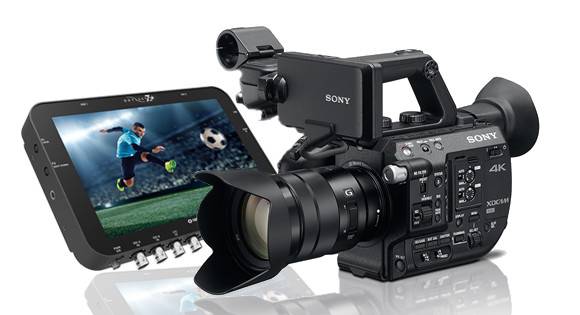
A few days ago, I was browsing the FS5/FS7 sub-forum on DVXuser, when I noticed some awesome FS5 Raw footage comparison vs Internal that was posted by Sony camera Expert, educator, trainer and Director of Photography Doug Jensen from Vortex Media. I am sharing them below, as I am sure that a lot of folk thinking about buying a Sony FS5, or those who already own one but are contemplating whether they should bite the bullet and buy an Odyssey7Q+ (plus its own Raw Bundle) + the FS5 4K Raw license for $499 in order to get the best possible quality from their camera. Whether that’s the case or not, I suggest watching the comparisons below and seeing for yourself.
Although, this test (just like any other test) is no substitute for getting your hands on the camera, it gets really close. I am a big fan of Doug’s work, and in the past have read his FS7 Field Guide, when I was thinking about getting the camera. I also use his WarmCards 3.0 for white balance almost on a daily basis, and I would gladly recommend them to anyone. Back in the day, I had bought his “Lighting for Interviews” DVD, which was (and still is) a great learning tool.
NOTE: I am NOT paid for saying this or an affiliate with Doug, just a fan of his work and guides, which I think most of you will find very useful.
Doug also has a dedicated Sony FS5 online course, which you can find a link to below and check out for yourself. I think he has a free chapter you can view on Vimeo, and if you dig what you are seeing you can then get the whole thing on Vimeo on-demand.
Anyway, check out Doug’s FS5 Raw vs Internal comparison below in 2 parts.
Sony PXW-FS5: Comparison of Internal Recording vs. RAW output to Odyssey 7Q+ (PART 1) from Doug Jensen on Vimeo.
In the months since I completed production of my 6-hour Sony FS5 Master Class training video (vimeo.com/153611461) I’ve had a lot of people write to ask me if I thought there were any advantages to recording the 4K RAW output of the FS5 to an external recorder vs. recording internally on SDXC cards. So, I decided to shoot some test footage one day with both at the same time and do a split-screen comparison. The camera only allows internal recording in HD resolution (not 4K) while 4K RAW is being output, so, in some ways, the test is also a comparison of HD vs. 4K. The camera was set for Picture Profile 7 (S-LOG2/S-Gamut) with the default settings. I exposed with the camera rated at ISO 1250 by exposing for white at 70%.
The 4K ProRes footage (on the left side of the screen) was lightly graded in Davinci Resolve 12.5 by compensating for exposure on one node and then applying Convergent Design’s “SONY_EE_Slog2_LC709A” LUT on a second node. The XAVC HD footage (on the right) was also graded in Resolve using the same “SONY_EE_Slog2_LC709A” LUT, plus a few other tweaks to attempt a quick & dirty match with the corresponding ProRes file. I didn’t spend a lot of time getting them to match perfectly so there are some remaining differences that I believe could easily be compensated for with a little more effort on most clips. No sharpening or noise reduction has been applied to any of the clips.
At 3:12 and 5:06 there are comparisons between internal recorded 4K XAVC vs. externally recorded ProRes 4K.
Lenses used were a Canon 200mm f/2.8 and an old Konica-Hexanon 28mm f/1.4.
FYI, outputting RAW from the FS5 requires several optional upgrades:
First, you must purchase Sony’s PXW-FS5 FS RAW Output Upgrade License which costs $500. Then you must have an external recorder that is capable of receiving the camera’s RAW 4K output and either recording it as Cinema DNG files or various flavors of ProRes. I own a Convergent Design Odyssey 7Q+ which is ideally suited for capturing RAW output from both the FS5 and FS7. An Odyssey 7Q+ costs $1800 plus SSD media cards. But you also need the RAW BUNDLE license for the 7Q+ which adds another $995 to the cost. So, gearing up to record the RAW output of the FS5 requires an investment of at least $3500 over and above the cost of the camera itself.Is it worth it to shoot RAW? I’ll leave that for other people to decide for themselves, I’ve just provided some footage that may help with that decision.
Sony PXW-FS7 Master Class training video: vimeo.com/ondemand/fs7
Sony PXW-FS7 Field Guide: VortexMedia.com/Sony_PXW-FS7_Field_Guide.html
Sony PXW-FS5 Master Class training video: vimeo.com/ondemand/fs5
Sony PMW-F55 Field Guide: itunes.apple.com/us/book/doug-jensens-guide-to-sony/id892493476?mt=11
Sony PXW-Z150 & NX100 Master Class training video: vimeo.com/ondemand/z150
Sony PXW-FS5: Comparison of Internal Recording vs. RAW, SDI and HDMI output to Odyssey 7Q+ (PART 2) from Doug Jensen on Vimeo.
UPDATE: I have uploaded a new version of this video that has Noise Reduction applied to the externally recorded RAW/ProRes files (see below).
This is the sequel to a video I recently posted that compares the internal recording capabilities of the Sony PXW-FS5 to what can be recorded with an external recorder, such as the Odyssey 7Q+.
You can watch Part 1 of the testing here: vimeo.com/181695617
After the first video was posted I got feedback from some people who wished there had been more shots that showed gradients, fine detail, and action such as splashing water, grass blowing in the wind, etc. So I went back out and did another round of testing. This video shows the results of that testing with a series of split-screen shots
The camera was set for Picture Profile 7 (S-LOG2/S-Gamut) with the default settings. I exposed with the camera rated at ISO 1250 by exposing for white at 70%. The Odyssey’s ProRes footage (on the left side of the screen) was lightly graded in DaVinci Resolve 12.5 Studio by compensating for exposure on one node and then applying Convergent Design’s “SONY_EE_Slog2_LC709A” LUT on a second node. 11.0 of spatial noise reduction has been applied on a third node.
The camera’s internally recorded footage (on the right) was also graded in Resolve using the same “SONY_EE_Slog2_LC709A” LUT, plus a some other minor adjustments to Lift, Gamma, and Gain to match the corresponding ProRes file. No noise reduction has been applied to the clips that were recorded internally.
Lenses used were a Red 300mm f/2.8, Red 50-150mm f/2.8, and a Cine-Xenar 75mm f/2.
I also decided to test some other settings head-to-head:
Internal HD vs. external 4K via the camera’s RAW output
Internal 4K vs. external HD via the camera’s SDI output
Internal 4K vs. external 4K via the camera’s HDMI output
Internal 4K vs. external HD via the camera’s HDMI output
Internal HD vs. external HD via the camera’s SDI output
Later on, I also found out that Hugh Brownstone from Three Blind Men and an Elephant spent a good 40 minutes chatting with renowned f discussing Sony FS5 and its phenomenal Raw recording capabilities with an external recorder. You can check out their discussion below.
With the Convergent Design Odyssey7Q+ ($1795 at B&H) with the Odyssey Raw bundle ($995 from CD) installed you get the following 4K/2K Raw frame rates from the Sony FS5:
– CinemaDNG Raw or ProRes:
- DCI 4K (4,096 x 2,160) up to 60p
- DCI 4K bursts up to 120p – only in a 4 second burst (20 seconds real-time)
- 2K (2,048 x 1,080) up to 240p – for Super-Slow motion
All of frame rates and resolutions will be included in the Odyssey RAW Bundle and users can either shoot in CinemaDNG Raw or Apple ProRes (HQ/422/LT), as well as Raw to Apple ProRes HQ/422 or LT conversion, which will yield better results in general than just shooting in ProRes to begin with.
FS5 + Atomos Shogun Inferno ($1995 at B&H) gives you:
- CinemaDNG Raw:
- 4K DCI/ 4K UHD at 24/25/30p
2K/1080p up to 120p
- 4K DCI/ 4K UHD at 24/25/30p
- Raw to ProRes/DNxHR:
- 4K DCI / 4K UHD up to 60p
- 2K/1080p up to 240p
[via Three Blind Men and an Elephant]
Disclaimer: As an Amazon Associate partner and participant in B&H and Adorama Affiliate programmes, we earn a small comission from each purchase made through the affiliate links listed above at no additional cost to you.
Claim your copy of DAVINCI RESOLVE - SIMPLIFIED COURSE. Get Instant Access!
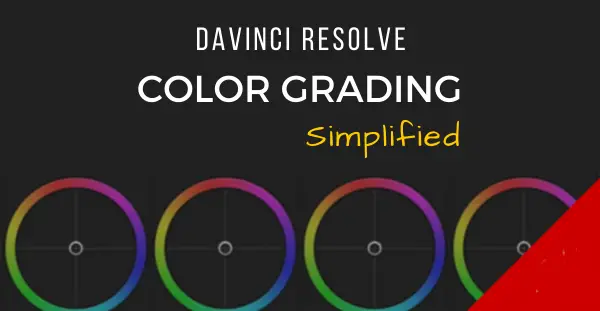


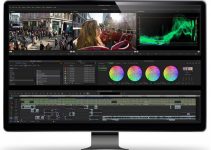
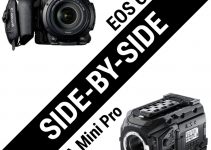
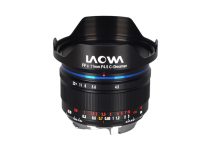
The 40 minute interview with the comparison included was great. What I would REALLY like to see is the same examples, but instead of doing minor corrections, compare how things hold up when the grades are really pushed. That may tell a different story. For standard shots though, amazing how well the internal codec holds up!
it will be the same
Could anyone explain the big color shift in raw vs internal? The colors seem to shift to blue and cooler. Thanks
he graded them differently
Well JPEGs have settings baked into to them. Raw has no real settings at all. It is straight off the sensor compared to JPEG having some kind of basic saturation, contrast, etc, boosted in camera.
its not that the 4k raw is bad. The internal XAVC is just good compared to the old AVCHD in the fs700. So getting raw or prores is a step up but not a super noticeable one like before.
This is not a raw comparrison. This is a comparission between internal recording and compressed proress via raw output. So the grades are not done with raw footage. its proress.
Exactly. Its a raw signal going into prores. Once its prores, it aint raw no more.